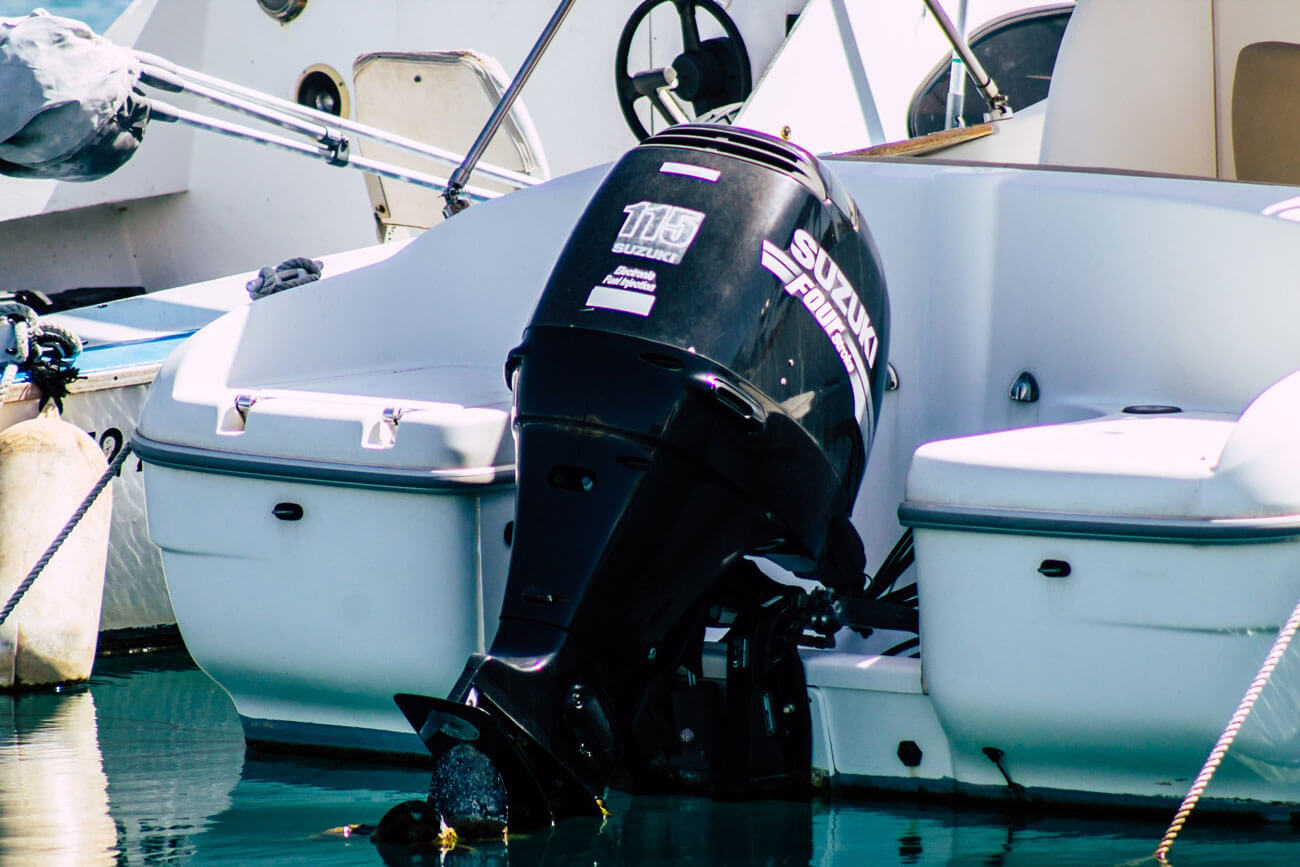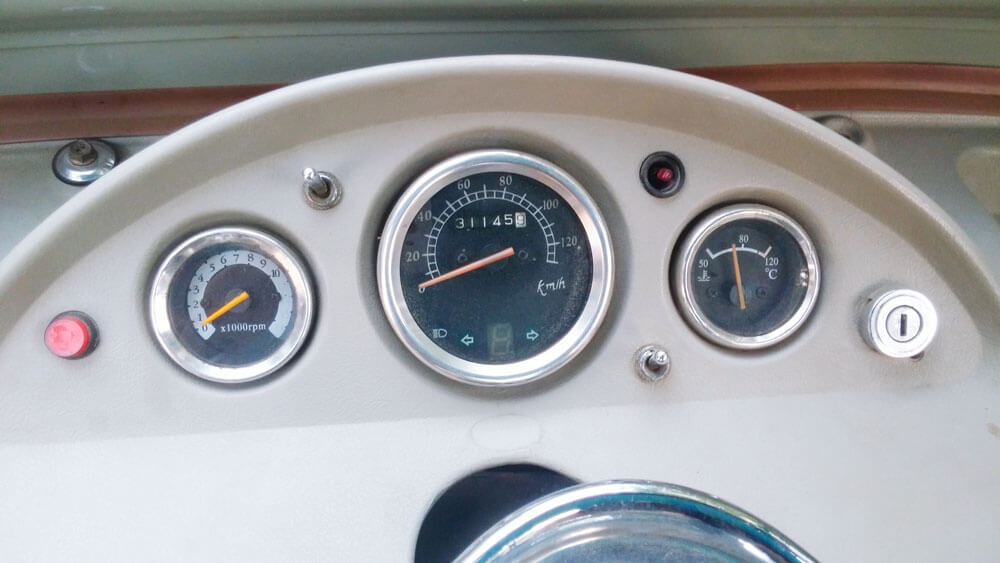No products in the cart.

Do New Engines Need Running In?
Like many internal combustion engines, marine engines require proper engine break-ins. Also called a run-in phase, this is a crucial period that can significantly impact the engine’s longevity and performance.
A new engine run-in procedure allows the engine parts to adjust to each other, helps smooth out surfaces, establishes proper clearances, and lets the components wear in a controlled manner.
During this new engine run-in procedure, you can expect manufacturers to provide guidelines that prevent premature wear and tear and ensure optimal engine performance.
These include limiting engine speed, gradually increasing load and RPM, and avoiding prolonged idling.
It’s essential for you to check the owner’s manual or recommendations for the correct break-in procedure for your specific engine, make, and model.
As an official Suzuki marine parts dealer, we’ll ensure you understand how to break in a new Suzuki outboard engine so it runs smoothly in the long run.
What to Expect During the Break-in Phase
For modern engines, the break-in period usually lasts 10 to 20 hours. During this time, you can expect specific guidelines and recommendations from the manufacturer to ensure proper seating of components and optimal performance.
While the process may vary depending on the engine make and model, you can generally expect the following during this time:
- Sub-optimal performance: The engine may not perform at optimal levels yet since it adjusts to its operating environment.
- Gradually increase RPM: For new boat engines, outboard break-in requires gradually increasing speed by starting at a low RPM. This way, the components wear in gradually and seat properly.
- Limiting maximum RPM: A maximum RPM is often set to prevent overheating and putting too much stress on the engine.
- No heavy loads: You’ll be unable to maximize your engine at this time. The engine load should be kept to a minimum to prevent excessive strain and allow components to wear in evenly.
- Monitoring fluids: The engine oil and coolant are some of the most essential fluids you should check during the break-in period.
- Observing warning signs: Strange noises, smells, or vibrations should be addressed immediately to prevent potential issues.
- Scheduled maintenance: You should expect to follow any maintenance tasks the manufacturer requires, such as an oil change and inspections on the oil pressure, piston rings, fuel pump fuse, cylinder wall, etc.
You should also be aware of signs that the engine is in its break-in stage. This includes a quieter engine because of the limited RPM or a slight difference in the power delivery.
Consulting the owner’s manual or manufacturer’s guidelines is always a good idea to get specific guidelines for your new engine.
Proper Care During the Break-in Phase
The break-in phase is a critical time for your engine to get itself ready to travel a thousand miles. If you want your new boat engines outboard to perform at their best, proper care should be taken at this stage.
Start At A Low RPM
During the initial startup of the break-in phase, it’s best to follow the manufacturer’s recommended RPM ranges. It usually starts at 30% to 40% of the engine’s maximum RPM for the first few hours.
This progressively increases to 60% to 70% towards the end of the break-in period. Staying within these RPM ranges gives the engine time to go at a gentle pace. This prevents excessive strain on the engine components, enhancing the engine’s longevity.

Monitor Temperature
Engine temperature is another aspect you need to watch for. Keeping temperatures at acceptable levels is an excellent way to care for your engine during break-in.
When your engine temperature is below the red line, ensure the engine doesn’t overheat and cause early wear and tear.
To keep your engine within optimal temperature, avoid heavy loads that can cause high RPMs, especially within the new engine run-in procedure.
Use The Right Fuel and Engine Oil
For your Suzuki outboard break-in procedure, or any outboard engine for that matter, it’s recommended that you use the specific products designed for the engine’s initial start.
Some examples could be higher-viscosity oils or fuels with additives that help seat the engine components. Choosing low-quality fuels or the wrong oil can lead to poor combustion and affect engine performance.
Using the right fuel and oil powers and lubricates the engine and enhances the engine break-in process by allowing the engine components to ease into their specific roles.
You can check the owner’s manual for specific details on your engine’s appropriate oil and fuel. This optimizes the engine’s combustion and lubrication while reducing friction, contributing to good overall engine health.
Best Practices for Long-Term Engine Health
After breaking in your engine correctly, the next step is to follow practices that keep it running at its best for as long as possible.
Follow Routine Maintenance Schedules
The manufacturing process affects the engine break-in process. This makes following the maintenance schedule that the manufacturer has set.
First, prioritize routine maintenance tasks to increase the longevity of your engine. For example, regular oil changes are critical since fresh oil reduces wear on engine parts and aids in engine cooling.
Another critical task is to inspect or replace spark plugs. Spark plugs primarily ignite the air-fuel mixture in the combustion chamber for the engine to start and run.
A worn or fouled spark plug can lead to incomplete combustion, poor engine performance, and increased emissions.
These regular check-ups and servicing help maintain the engine to perform at its optimum levels. These can also detect potential issues early, thus saving you from costly repairs and downtime in the future.
Other inspections include cleaning the cooling system, checking the power trim fluid, and inspecting the engine’s general condition.

Keep An Eye on Performance
Just as important is to keep a close eye on the engine’s performance post-break-in. Attention should be given to any unusual sounds or changes in the engine’s power delivery and fuel efficiency.
These could be indications of underlying issues that need prompt attention.
Adjustments After Proper Engine Break-In
You might need to make certain adjustments after keeping track of your engine’s performance and behavior.
For example, you might need to adjust the idle speed, timing, or fuel mixture based on your observations and the manufacturer’s recommendations.
You may also need to change the engine oil to remove any residues and keep the engine properly lubricated.
Utilize Diagnostic Tools
Some outboard engines come equipped with diagnostic tools. These help you monitor your engine’s performance by providing different types of information.
This can include engine RPM, temperature, fuel consumption, and potential issues the engine might encounter.
Utilizing these tools can help you keep track of your engine’s health regularly and address any concerns promptly.
Get Expert Guidance
Because new outboard engines need time for break-in, reaching out to Suzuki Marine experts or authorized distributors like Precision Marine can be invaluable to enable your engine to perform at its best.
Their expert insights and guidance can help you understand your engine’s specific needs and nuances, avoid common mistakes, understand engine dynamics, and troubleshoot problems, thus ensuring your engine remains in optimal condition for years to come.
Ensuring the Longevity and Performance of Your Suzuki Marine Outboard Engine
The break-in phase is pivotal for new engines because it sets the foundation for optimal performance and longevity.
At this time, the engine can adjust and prepare for many miles of operation. Adhering strictly to the manufacturer’s guidelines during this phase can significantly impact the engine’s function and durability.
And just as important is following the routine maintenance after the break-in period. Regular check-ups and servicing can prevent potential issues, leading to long-lasting engine health.
More importantly, expert guidance from authorized distributors like Precision Marine can provide valuable insights during your Suzuki outboard break-in procedure.
Visit Precision Marine’s website now to explore genuine Suzuki Marine Outboard Engine parts and gain expert advice for your engine’s performance and durability!